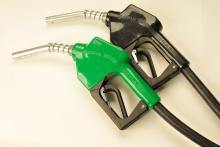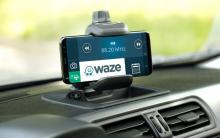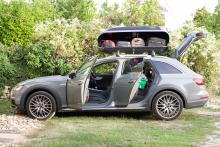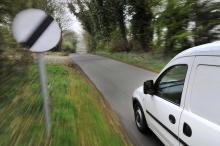
In association with Mini's all-electric range
2024 Autumn Budget: what it will mean for motorists
We scrutinise the Government's first budget to assess the impact it will have on motorists. Will it cost you more to run and refuel your car?...

When the current Government was campaigning to win the election earlier in 2024, its manifesto contained some potential good news for motorists. If the Labour Party won the election it would fix an additional one million potholes every year it was in power; it would tackle the high cost of car insurance premiums; and it would bring in measures to reassure used electric vehicles (EVs) buyers about EV battery health.
However, in the run up to the 2024 Autumn Budget there were suggestions that it might instead penalise the nation's 41 million drivers. The new Government’s first budget has now taken place and while it contained some good news for drivers, it also promises increased costs for many in the future.
No change to fuel duty
The good news is that the Chancellor, Rachel Reeves, has decided to keep the freeze on fuel duty and not remove the 5p per litre discount on fuel duty that was introduced by then-Chancellor Rishi Sunak in 2022.
The combined cost to the Treasury of keeping these two measures in place in 2025-2026 will be £3bn, but the decision not to remove them is "to support hard-working families and businesses", according to the Chancellor.
Removing the measures would have put the fuel tax rate back up to 58p per litre, taking the average cost of a litre of petrol up to 145.61p and diesel up to 150.35p. For a driver covering the UK’s average of 7400 miles per year, the increase in fuel duty would equate to an additional average cost of £43 to run a petrol car and £39 a diesel.
Rachel Reeves said: "Drivers will face no higher taxes at petrol pumps next year."

£500m for potholes
Another positive move for all road users is the addition of £500 million of funding in road maintenance, which the Government says will enable local authorities to repair an additional one million potholes per year. While this is a welcome increase to the existing budget of 8.3bn pledged by the previous administration, it won't transform our roads. According to research by the Asphalt Industry Alliance, it would cost £16.3 billion to repair all of our roads, and that process would take 10 years.
Changes to road tax
When it comes to road tax (VED), the Chancellor confirmed that the proposed changes in VED that are due to take effect from April 2025 will remain in place. This means EVs will lose their exemption from VED from April, and buyers will have to pay the next lowest first-year rate, which is currently £10. However, instead of paying the standard car rate of £190 a year after that, which is the current plan, they will pay £10 a year until 2029-2030, which is good news for EV owners.
However, VED costs for hybrid and internal combustion-engined (ICE) cars will rise steeply in many cases. The increases are as follows:
Rates for cars emitting 1-50 g/km of CO2, including hybrid vehicles, will increase from £10 a year to £110 for 2025-26.
Rates for cars emitting 51-75 g/km of CO2, including hybrid vehicles, will increase from £30 to £130 for 2025-26.
All other rates for cars emitting 76g/km of CO2 and above will double from their current level for 2025-26. This means the first-year rate of VED for a Ford Puma mild hybrid with CO2 emissions of 122g/km will be £440, and a Land Rover Defender with 243g/km emissions will cost £5490 in VED for the first year.
Changes to company car tax
The Chancellor also confirmed that the low rate of company car tax, also known as benefit in kind (BIK) tax, will remain low from 2028 onwards to continue to encourage the uptake of electric vehicles. The BIK rates for zero-emission vehicles will rise by 2% in 2028-2029 and 2029-2030, taking it up from 5% to 9%.
However, company car tax rates for hybrid and ICE cars will rise from 2028-29 to incentivise the take-up of electric vehicles.
The rate for cars with emissions of 1 – 50g/km of CO2, including hybrid vehicles, will rise to 18% in 2028-29 and 19% in 2029-30.
The rate for all other vehicles will increase by 1% per year in 2028-29 and 2029-30. The maximum rate will also increase by 1% per year to 38% for 2028-2029 and 39% for 2029-2030. This means for vehicles with emissions of 51g/km CO2 and over, rates will increase to 38% in 2028-29 and 39% in 2029-30.
What else was announced?
There was only vague news on the manifesto commitment to bring the ban on non-electric cars back to 2030, with the Budget document stating: "The government has committed to phasing out new cars that rely solely on internal combustion engines by 2030 and from 2035 all new cars and vans sold in the UK will be zero emission."
There was no news on whether or not the Government will introduce road pricing.
How to save money on fuel
For now, it looks like driving is going to get more expensive for the majority. But if you can’t reduce your costs by going electric, you can minimise the damage those miles will do to your bank balance by making some simple changes. Here are our top tips.
Before you set off:
Search for the cheapest fuel
A quick and easy way to find out which service station has the lowest fuel prices is to check out those in your local area on a price comparison app like petrolprices.com. As well as showing you up-to-date pricing information for around 8500 forecourts across the UK, it also shows short-term discounts and promotional deals that are available.
Remember that driving out of your way to find the cheapest fuel can be a false economy.
Share the journey
Sharing the journey with another person can reap big savings, so ask at work to see if you can share the commute with a colleague, or register for a service such as liftshare.com to be paired up with people looking to do the same journey as you.
Pick the most efficient route

The way you get to places makes a big difference to your fuel economy. For example, a longer route could actually cut your fuel bill if it includes less stop-start traffic, so it's worth checking traffic apps, such as Waze, before you head off. You an also enter details of an upcoming drive into Google Maps and it will show you a number of route options so you can pick the shortest or the one with the least hold-ups. You may also be able to go into the settings and select the most fuel efficient route. It may signify the most efficient route with a green leaf icon.
Apps such as these show live traffic, so can automatically reroute you around the worst congestion. You can access Apple Maps, Google Maps and Waze through your smartphone — if it is securely held in a mount — or through your car's infotainment screen if you have a vehicle compatible with Apple Carplay or Android Auto.
Log your fuel use
Generally speaking, cars are more efficient at constant speeds, away from stop-start traffic, but there can be exceptions. There are a number of fuel use apps, such as Fuelly and Fuel.io which allow you to track your journeys, your mileage and how much you're getting from the gallon.
Clear out the clutter

The lighter your car is, the less fuel it'll use. So, while you might want to carry a shovel in winter, leave it in the garage in summer. And if the kids aren't travelling with you, don't take their buggy.
Go streamlined
If you're not using the carrying capacity of external kit like roof boxes or bike racks, take them off the car; the extra wind resistance these items create has a surprisingly profound effect on fuel consumption, as do open windows and sunroofs. Simply by removing roof bars, you could see fuel economy improvements of around 10%.
Pump up the tyres
Under-inflated tyres create drag. If you keep yours correctly inflated, you could use up to 25% less fuel.
Buy oil, save fuel
Dirty oil doesn't lubricate engine parts as well as clean oil. And poorly-maintained engines run less efficiently, so it's essential to keep up the servicing regime. Changing your car's oil in accordance with the manufacturer's recommendations is vital to preventing mechanical failure.
Driving tips to save fuel
Keep moving
Your car uses most fuel getting away from a standstill, so try to anticipate the road ahead, keeping a good distance from the traffic in front. That way, you'll need to slow down — and speed up — less. And when you do have to stop, remember to pull away gently to reduce the strain on the engine.
Shift up sooner
Always try to change up to the next gear as soon as possible, because the fewer revs the engine is doing at any given speed, the more miles it'll do to the gallon. Just ensure you don't upshift too quickly, because the engine will have to work harder, using more fuel in the process.
It's also worth bearing in mind that many modern cars shut off their fuel injectors when you're coasting in gear, so staying in gear for as long as possible when you're slowing down reduces fuel consumption.
Slash your speed

The slower you're going in top gear, the more miles you'll do per gallon. In fact, if you cruise at 60mph rather than 90mph on the motorway you'll use roughly 50% less fuel.
Switching off your car's air-con in winter can cost you more than it saves, because if it isn't used regularly the seals dry out and you'll face a bill to get it working again. However, it is worth switching off systems such the rear demister and heated seats when you don't need them, because they all make the engine work harder to provide the power for them.
Reduce idling time
Most modern cars will automatically switch off the engine when you come to a halt. But if yours doesn't (and you're stationary for more than a few minutes), do it yourself. Just remember that it's not advisable if you have a tired car battery.
For all the latest reviews, advice and new car deals, sign up to the What Car? newsletter here








